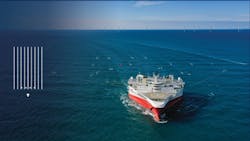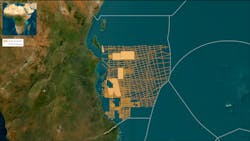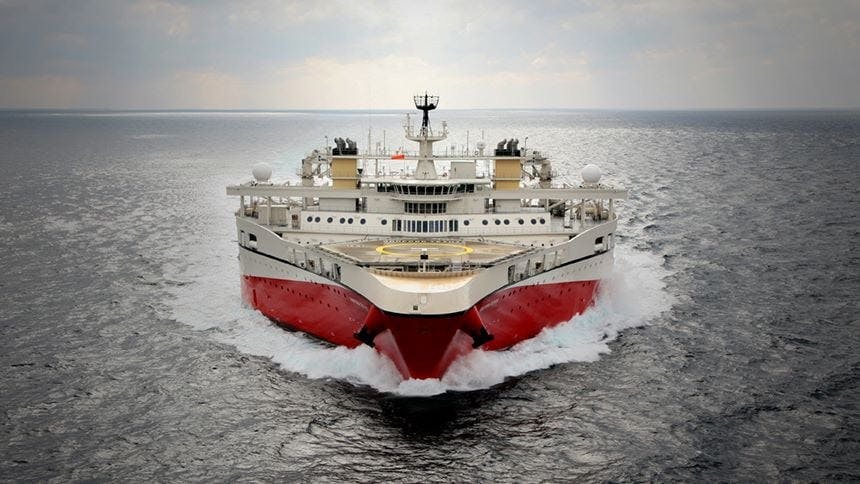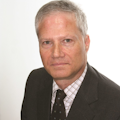Geoscience giant in quest to become world’s leading subsurface data provider
By Jeremy Beckman, Editor-Europe
Over the past four years, TGS has undergone a seismic transformation, now pitching itself as a one-stop shop for the E&P and new energy industries’ subsurface needs. A series of strategic company buys culminated in the recently completed takeover of PGS, so often TGS’ partner in its multi-year data acquisition campaigns in frontier offshore regions. Senior executives of the company outlined the background to these deals and business trends going forward during a Capital Markets Day presentation in Oslo.
Chairman Christopher Finlayson said the company’s main goal now, with its expanded range of services, technologies and geographical spreads, is to be the world’s largest energy data provider. The acquisition-led growth strategy, he explained, involved not only moving for companies “at the right time and at the right price,” but also integrating them successfully, “realizing synergies rapidly… while retaining top talent.” Among those joining since 2020, the price for ION Geophysical was fully paid for in 12 months, he said, “just from the multi-client side, giving us enhanced technology in acquisition and processing capabilities.” With Magseis Fairfield next to come onboard, TGS went from having no participation whatsoever in Ocean Bottom Node (OBN) technology – the fastest growing seismic segment, according to Finlayson – “to being industry leader. Now we are looking to get the best out of the PGS takeover.
“Buying so many companies has only been possible due to TGS’ robust financial position, which it has maintained over the years, almost unique among oil service companies. TGS was an asset-light company, now it has significant owned assets. Changes in the market made these moves essential - consolidation among our customers and their supplier base meant that to maintain our success, we needed to be everywhere, able, for instance, to acquire streamer products when needed.”
CEO Kristian Johansen had jetted in overnight from the IMAGE 2024 applied geoscience and energy convention in Houston. “For the first time,” he said, “I felt we could sit there with our clients and address their every single need, all aspects of their E&P business.” He instanced discussions with five of TGS’ biggest E&P clients, each of which had different requirements. “One wanted a long-term approach on the OBN side… another to address streamer challenges they might have in Africa. A third wanted to look into a library subscription to our library; the fourth had interest in New Energy. And the fifth was interested in extra imaging software, and using TGS to image or reimage their major databases.”
ONUS ON EXPLORATION
The E&P industry is having to contend with a very high decline rate from producing fields worldwide, Johansen said. At the same time, ExxonMobil’s latest long-term energy outlook predicts that in 2050, global demand for oil will actually be 2% higher than now, and 21% higher for gas. And at that point, the report claims, oil and gas will still represent 54% of the overall global energy mix.
But the IOC majors are only replacing 40% of their stocks through what they find, Johansen continued, with their oil reserve lifespans in dramatic decline, down from 13 to nine years on average. “Our clients will have to take this into account, they will be under severe pressure on exploration. They have done a lot of M&A, with $200 billion of M&A acquisitions across the industry last year. While that activity will continue, it doesn’t solve the big issue, just their own issues.” At the same time, the oil and gas industry has also focused over the past five years on increasing recovery from producing fields, and near-field exploration. TGS still sees significant opportunities in that market, he added, along with growing demand for 4D seismic monitoring services.
Today the company’ 2D and 3D data library covers petroleum basins worldwide. Over the past eight years, it has invested over $4 billion in seismic data, representing 62-65% of the overall global market, Johansen claimed. At the same time, he added, “there has been a significant consolidation of seismic vessels. In 2013 there were 65 vessels owned by seven to eight companies; now, there are just 15-17, owned basically by two companies, TGS and Shearwater Geoservices. Others that used to have vessels are now no longer there for financial reasons.”
In 2020, TGS embarked on its diversification quest. At that point, it regarded itself as the leading multi-client data compiler/developer, with three other main players in the market. But it was also allocating much of its resources to imaging and re-imaging its multi-client products for internal purposes - and was not therefore widely seen as an `external’ imaging specialist. Then the company decided to dip its toes into the emerging Carbon Capture and Storage (CCS) market, Johansen said, by selling or licensing data it had already acquired for oil and gas purposes. “So we were into New Energy at that point, although not a well-diversified organization – asset-light in a market that had multiple opportunities in terms of sourcing assets wherever you need them.
“Then COVID arrived, and the IEA’s pessimistic report [predicting no further need for exploration], which made us nervous about putting all our eggs into one basket, geology and geoscience. So we did a deep dive into renewables, quickly realizing that this industry is are also based on subsurface data. Offshore wind and its offshore installations, deepsea mining, carbon capture and storage, geothermal, all need subsurface data and subsurface knowledge. So we acquired 4C Offshore, an offshore wind market intelligence company…With 4C, we got 2,000 subscribers, so a company [TGS] that had 25 main oil and gas customers now also had access to thousands of potential clients in the offshore wind sector. 4C, which was added to our NE Solutions division, has since grown rapidly in line with our business case when we bought them, and with good margins.”
In 2022, TGS decided to enter the solar energy market, acquiring Prediktor, a specialist Norwegian provider of solar asset management solutions. and also an asset management installation service offshore for traditional energy companies such as Aker BP and Equinor in Norway. Predictor in turn gained an opportunity to grow its business by serving TGS’ clients. “Solar is currently the fastest growing of all the New Energy sectors,” said Johansen, “and Predictor’s software is used in three of the world’s five largest solar projects.”
And then came ION Geophysical, a private, NYSE-listed company that was in financial difficulty. It was, he acknowledged, an opportunistic move, “but it turned out to be the best acquisition we’ve ever done, making our money back within nine months. More than that, it improved our imaging reputation and our overall offering in imaging.” One of the biggest spinoffs was a recently signed arrangement under which a supermajor will adopt ION software for all its internal needs, working jointly with TGS to research and develop the next range of algorithms.
Johansen described Magseis Fairfield, next up in early 2023, as a “transitional acquisition, a completely new pie to our service offering. We could see that OBN would be the fastest growing seismic sector, with more activity moving closer to the reservoir – and we gave them access to a couple of supermajors that TGS is close to. Now the group has 40% of the global OBN deepwater market, and we have added access to technologies that are being used by our New Energy teams. Over two years this business has developed better than expected.
“PGS brings another dimension to our business…Before, being on the outside and paying for their services would be expensive for us.” PGS, he explained, brings streamer capacity, additional Multi-Client capabilities, a large seismic data library, strong imaging and a New Energy business, which means that TGS can now claim to be a company that is fully integrated and “best in class in every segment.”
Petrobras’ recent award to TGS of the Pama 3D survey offshore Brazil way is a good example of how the expanded offering now spans the full value chain, he continued. “It’s the first opportunity to leverage our integrated model: a huge area, 19,347 sq km to be covered out of a 55,000 sq km permitted area, one of the world’s largest MC programs. We can use one or two vessels if we want. We manage everything – getting the permit, shooting the multi-client data, developing the survey (using a TGS vessel), imaging in-house, data management, and finally, we sell this data. Previously we had to use third parties for data management, now there are much better efficiencies. Pama is a blueprint for what we will do in future.”
The company now owns the most capable 3D seismic vessel fleet, he claimed, in a market that is down to two main players, the other being Shearwater Geoservices. “There is no newbuild activity as no banks are willing to back construction - typically it costs $270 million for a new vessel and $200 million for a replacement. TGS owns…seven high-spec 3D vessels that cost less than $100 million each on average, and which are 10 years old on average. Each has a lifetime of 35 years, maybe 40, with a lot of value, as they can be used also for offshore wind and carbon capture and storage (CCS). By 2027 it’s predicted there will be a need for five vessels for the CCS industry. If true, we may run out of vessels.”
As for future prospects in the regions where activity is growing fastest, Johansen placed the US Gulf of Mexico at the forefront in terms of technical advances. “The GoM has a very strong technology intensity, has been very much a testing ground for testing and applying new technologies, and is now employing the 6th generation of seismic technology. The Gulf never stops surprising in terms of absorbing and demanding new technologies. Test there, apply similar elsewhere in the world.” He cited new breakthroughs in OBN that will feature in big programs TGS is embarking on in the sector, with PGS also providing a strong data position over the US GoM, notably in OBN. “This means that TGS can now shoot the entire western GoM, an area where the company previously had no presence.”
Elsewhere, Norway is sustaining a high level of activity, Johansen said, with a push for new technology in mature areas (similar to the GoM). “The Middle East has great data needs, but relatively low-quality data. TGS had been weaker there but will go into that market. We aim to break in using our technology and services in transition areas and onshore.
“South-east Asia has a very high need for data in future. India, for example, imports 85% of its energy, so is under huge pressure to find petroleum basins. There will be a lot of activity going forward also in Malaysia and Indonesia. In West Africa too we expect an enormous amount of exploration activity…Government bureaucracy is holding back progress, but it will happen. The exploration successes of the past 12 months offshore Namibia will drive data needs in future.” But the highest levels of new data acquisition anywhere over the next five years will be offshore Brazil, he concluded.
CARBON CAPTURE CONSIDERATIONS
According to Carel Hooijkaas, EVP New Energy Solutions at TGS: “In a world which will have oil and gas for longer, having a CCS solution is crucial and will ultimately be part of a license to operate for our clients. The PGS Ramform vessels in this context of the new CCS opportunities are unique, they represent over 40% of the total CCS-capable fleet.” TGS can also access additional 3D towed streamer capacity, he said, via long or short-term charters of third-party vessels.
“To enter the CCS market, companies first need a global view of where to potentially focus. Our MC/wells data helps them identify areas they should focus on. 4C Offshore can provide market intelligence for clients doing screening. When they decide [where to go], TGS can offer offshore wind floating lidars that measure wind data over a long period of time, which clients can use for an investment decision, whether to take a license or not. If yes, we can provide acquisition for new data using our vessels to image the subsurface so clients can see where to put the foundations for their turbines. Clients also need auxiliary measurements, gravity – our vessels have instruments to make these measurements and can acquire all data needed at the same time. For CCS we use OBN combined with towed streamers to create the imaging needed.”
In offshore wind, there is scope to expand by deploying wide-tow streamer capabilities to create efficiencies, he added. “And for carbon storage, we can offer monitoring solutions over the long term as a reservoir may well be in use for decades.” This is a market “that is very much evolving and diverse customers in oil and gas, and also private equity, need to focus on how best to adapt accordingly.”
About the Author
Jeremy Beckman
Editor, Europe
Jeremy Beckman has been Editor Europe, Offshore since 1992. Prior to joining Offshore he was a freelance journalist for eight years, working for a variety of electronics, computing and scientific journals in the UK. He regularly writes news columns on trends and events both in the NW Europe offshore region and globally. He also writes features on developments and technology in exploration and production.



